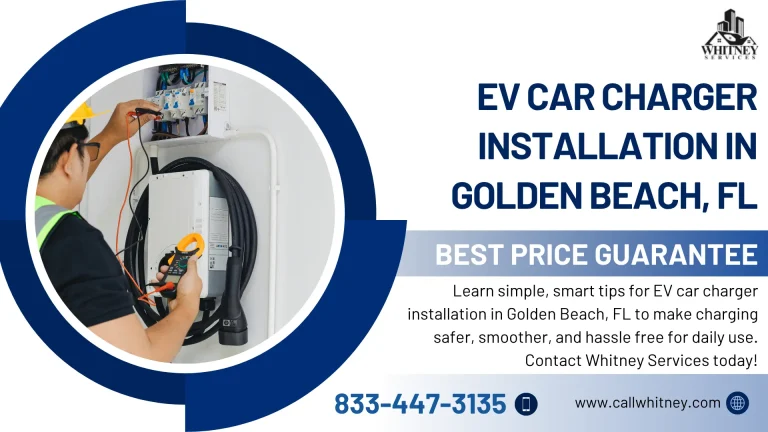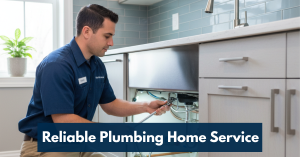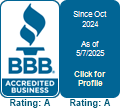If you own an electric vehicle or are thinking about making the shift, having a dependable charger installed at home can make a big difference. For those living in Golden Beach, FL, a home charger means you can skip the hassle of public stations, save time, and start each day with a full battery.
But installing an EV charger isn’t as simple as just plugging in — there are important details to work through to ensure safety, efficiency, and long-term reliability. Here are some practical, homeowner-friendly tips to guide you through your EV car charger installation in Golden Beach, FL.
1. Understand the Different Levels of EV Chargers
EV chargers come in different “levels,” and choosing the right one will impact how fast you charge, how often you plug in, and the cost of installation:
Level 1 (120V)
This is the slowest option. It plugs into a regular household outlet and adds a modest amount of driving range per hour. It’s a good backup option or for light daily driving.
Level 2 (240V)
This is the most common choice for home charging. It provides much faster charging — often adding 10 to 20 miles of range every hour. But it requires a dedicated circuit and more serious electrical work.
DC Fast Charging
This is very fast but generally not practical or cost-effective for residential use, because it requires commercial-level power infrastructure.
For most Golden Beach, FL homeowners, a Level 2 charger is ideal. It offers a strong balance between cost and convenience, and when professionally installed, it’s very reliable for daily EV needs.
2. Evaluate Your Home’s Electrical Panel
Before you pick a charger and call an electrician, take time to understand your home’s current electrical capacity. Many homes, especially older ones, may not have enough spare capacity in their panel to support a high-amp EV charger safely.
When a licensed electrician from Whitney Services comes out to assess, they’ll look at things like:
- How much load your panel is currently serving
- Whether there is enough free space to add a breaker for the charger
- If a panel upgrade is necessary or simply a sub-panel will do
- Your long-term needs — maybe you plan to add solar panels, a second EV, or other high-power appliances.
Spending a little more now on the right electrical setup can save you headaches later and ensure your installation is safe and code-compliant.
3. Navigating Permits and Inspection
A crucial part of EV charger installation in Golden Beach, FL is handling the permit process correctly. For a 240V installation, local building codes often require a permit and a final inspection. That’s because the work involves altering your home’s electrical system, and the authorities want to make sure it’s done to code.
Choosing Whitney Services for your installation means we handle all that paperwork. We will submit permit applications, coordinate with local inspectors, and make sure everything is approved before we turn the charger on. You don’t have to worry about navigating the bureaucracy — our licensed electricians take that burden off your plate.
4. Selecting the Right Charger for Your Needs
When shopping for the right EV charger for your home, you’ll want to think beyond price. Here are some features to consider:
Amperage
Higher amperage means faster charging — but only if your home’s electrical system supports it.
Smart Features
Many modern chargers come with Wi-Fi connectivity, usage monitoring, scheduling, and energy-management tools. These let you charge during off-peak hours or track how much energy you use — which can reduce costs.
Durability
In Golden Beach, the weather can be intense, so it’s smart to pick a charger with a strong outdoor-use rating. It should be weather-resistant, rugged, and safe year-round.
Future-Proofing
Even if you’re only installing one charger now, you might want something capable of handling more power later. Chargers designed for higher output or with modular setups can save you from having to upgrade again soon.
5. Strategic Placement of the Charger
Where you put your charger matters more than many people think. A well-sited charger makes your daily routine easier and can also keep installation costs lower.
Here’s how to choose the best spot in your garage or on your property:
- Mount the charger as close as possible to where your EV’s charging port connects. This keeps the cord from dangling or getting in the way.
- Try to reduce the distance between the charger and your electrical panel. Shorter cable runs mean less material required and cleaner work overall.
- For outdoor installations, pick a place that’s protected from excessive sun or moisture but still easy to use. Avoid low spots that might collect water, and make sure the charger is easily reachable for everyday use.
6. Hire a Licensed Electrician — Don’t Cut Corners
Working with high-voltage wiring is not something to be taken lightly. Hiring a licensed, experienced electrician — especially one with a background in EV charger installation — has some big advantages:
- They guarantee the work meets all local safety codes.
- They handle tricky parts like running new wiring, setting up a dedicated circuit, or upgrading your panel.
- They test everything when the job is done, so you know your charger works properly before you start relying on it.
- They can educate you on how to use, maintain, and troubleshoot your charger — so you understand what signs to watch for in the future.
That kind of professional approach gives you confidence that your whole setup is solid and dependable.
7. Walkthrough, Testing, and Education
Once the installation is complete, a quality electrician will do more than just flip the switch. A full walkthrough helps make sure you feel comfortable using the system:
- You’ll go through how to plug in, how to turn charging on or off, and how to use any smart features your charger offers.
- They’ll show you how to monitor usage, set schedules, or track power consumption if your unit has that capacity.
- You’ll also get guidance on upkeep, how often to check the charger, what kind of wear to look for, and who to call if something seems off.
That education piece is essential. It ensures you get the most from your investment and protects your charger (and your home) over time.
8. Plan Ahead for Future Needs
Even though you might only have one EV today, it’s smart to think ahead. Your setup should be scalable, so it can grow with your needs. Consider:
- Whether you’ll eventually add a second EV or even a small fleet of electric cars.
- If you plan to install solar panels, home batteries, or other energy infrastructure.
- Whether a load-management system or a higher-capacity sub-panel now would give you flexibility later.
By thinking long-term during installation, you set yourself up for easy expansion without needing to tear everything out and start over.
Why Choose Whitney Services for Your EV Charger Installation
When it comes to electrical services and EV charger installation in Golden Beach, FL, Whitney Services is uniquely positioned to deliver a seamless, trustworthy experience. Here’s why many homeowners turn to us:
- We are fully licensed electricians with proven experience in EV charger installation. We know local permitting requirements and building codes inside out.
- We provide end-to-end service — from your first call, through site evaluation, permit pull, installation, and final testing.
- We offer transparent, fair pricing, so there are no surprise costs during the process.
- We use high-quality materials and recommend chargers and wiring suited for Florida’s climate, ensuring durability and safety.
- We deliver personalized guidance — we don’t just install and leave. We walk you through how to use your charger, optimize your schedule, and maintain it over time.
Conclusion
Choosing to install a home EV charger in Golden Beach, FL is a smart, forward-thinking decision. It gives you daily convenience, saves money in the long run, and helps you rely less on public charging stations. But the benefits only come if the installation is well thought out and professionally done.
From understanding which charger level fits your needs, to assessing your electrical panel, to picking the right spot for mounting — each step matters. Most importantly, working with a trusted electrician like Whitney Services ensures your setup is safe, efficient, and built for the future.
If you’re ready to take the next step, reach out to Whitney Services. We’ll help you through the entire process — no guesswork, no stress, just reliable service and a charger that works for you.
Frequently Asked Questions
The cost depends on several factors: the type of charger you choose, how far the wiring has to run, whether your panel needs an upgrade, and how complex the installation is. For many homeowners, labor costs may range from a few hundred to a few thousand dollars, depending on their specific situation.
Yes. Most installations involving new wiring or 240V circuits require a permit and inspection. A licensed electrician will handle the permit application and coordinate with local officials.
Possibly. If your existing panel is already near capacity, you may need a panel upgrade, a sub-panel, or a load management system. That depends on your current load and what you plan for the future.
While technically possible, doing it yourself is risky unless you have electric-work experience. High-voltage wiring needs to meet safety codes, and improper installation can pose fire or electrical hazards. Hiring a qualified electrician is the safer, smarter route.
In some cases, yes. Depending on your utility provider and local government programs, there may be rebates or incentives to reduce the cost of installation. It’s worth asking your electrician or checking with your utility to find out what’s available.







